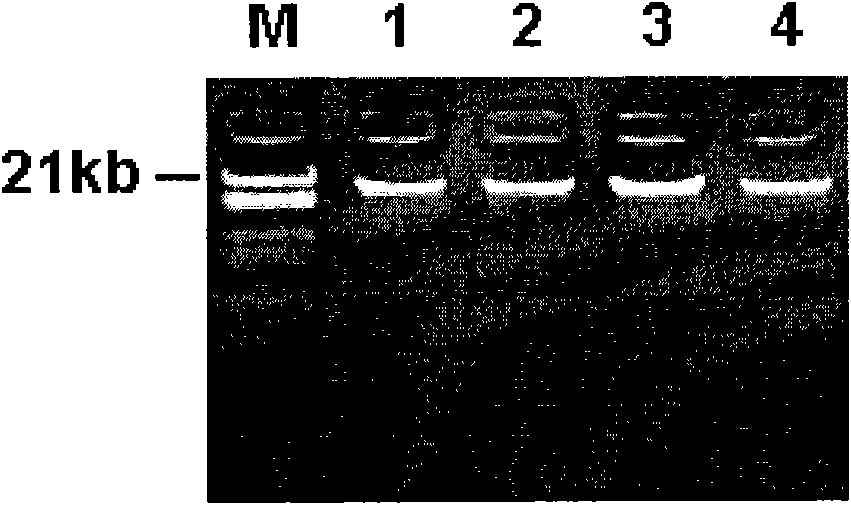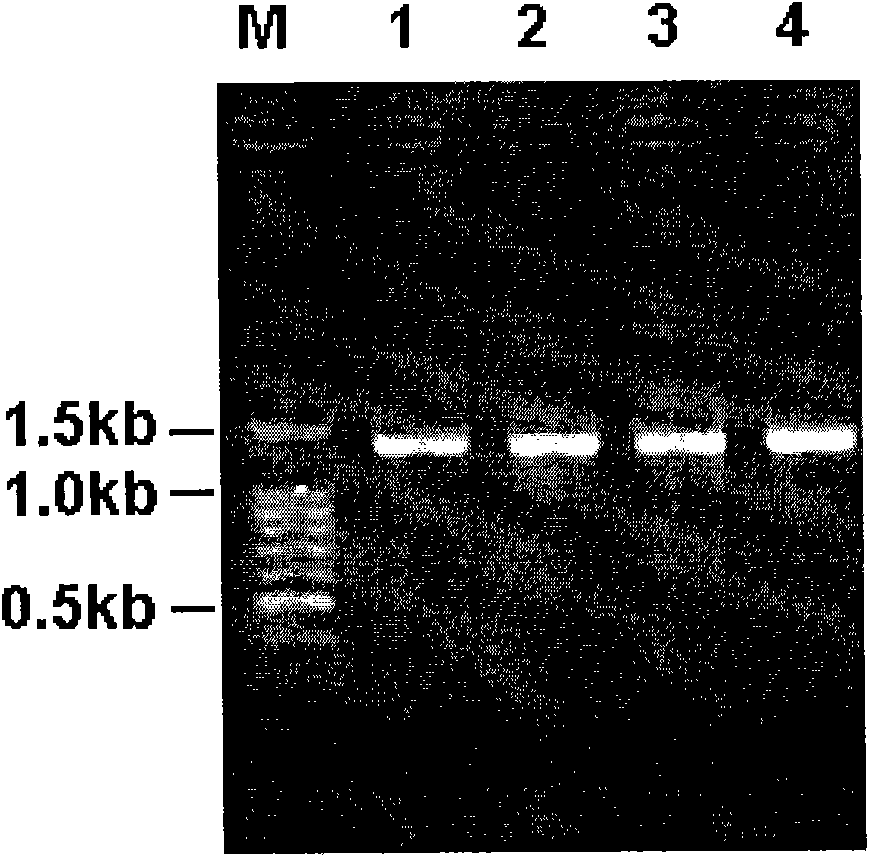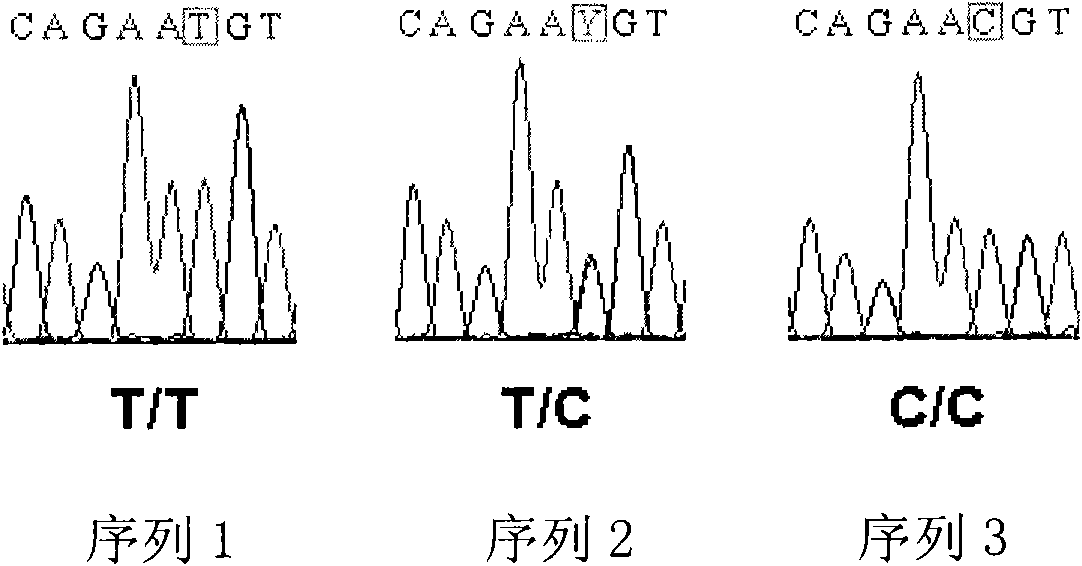Method for quickly extracting genome DNA from blood clot
A genome and blood clot technology, applied in recombinant DNA technology, DNA preparation, animal cells, etc., can solve problems such as endangering the health of operators, dangerous operation processes, reducing extraction efficiency, etc., to ensure health and safety, avoid cross-contamination, and simplify purification. effect of steps
- Summary
- Abstract
- Description
- Claims
- Application Information
AI Technical Summary
Problems solved by technology
Method used
Image
Examples
Embodiment 1
[0032] Example 1. Using the method of the present invention to extract genomic DNA from blood clots
[0033] 1. Extraction of genomic DNA from blood clots
[0034] (1) Rapid dispersal of blood clots
[0035] 1. Put 2mL of blood clot into a disposable 5mL syringe padded with sterile gauze (50 mesh aperture; 40-60 mesh aperture can be selected according to the condition of the blood clot). The force can be used, and the force of the applied force can be selected according to the situation of the blood clot) to squeeze gently.
[0036] 2. Move the extruded blood sample to another disposable 5mL syringe padded with sterile gauze (120 mesh aperture; 110-130 mesh aperture can be selected according to the condition of blood clots), use 8-12 Newtons (2 -The force of 20 Newtons can be used, and the size of the applied force can be selected according to the condition of the blood clot) The force of Newton is gently squeezed.
[0037] 3. Collect the effluent blood into a 15mL centrifu...
Embodiment 2
[0063] Embodiment 2. Comparison of several methods for breaking up blood clots
[0064] 1. Use the method of the present invention to break up blood clots
[0065] Same as step 1 of Example 1.
[0066] It can effectively break up blood clots and get uniform blood. The blood remains stable and does not clot at room temperature for 20 minutes.
[0067] 2. Directly use 120 mesh aperture gauze to filter and break up blood clots
[0068] The blood clot was directly filtered through 120 mesh gauze.
[0069] It is difficult to pass the blood clot through the gauze, requiring very high pressure, and the filtered blood contains small blood clot particles, which is not conducive to subsequent extraction.
[0070] 3. Centrifugal filtration to break up blood clots
[0071] The clot was filtered through sterile gauze (120 mesh pore size) by centrifugation.
[0072] After centrifugation at 8,000g for 3 minutes, the blood clot can be completely filtered through the gauze, but at the en...
PUM
 Login to View More
Login to View More Abstract
Description
Claims
Application Information
 Login to View More
Login to View More - R&D
- Intellectual Property
- Life Sciences
- Materials
- Tech Scout
- Unparalleled Data Quality
- Higher Quality Content
- 60% Fewer Hallucinations
Browse by: Latest US Patents, China's latest patents, Technical Efficacy Thesaurus, Application Domain, Technology Topic, Popular Technical Reports.
© 2025 PatSnap. All rights reserved.Legal|Privacy policy|Modern Slavery Act Transparency Statement|Sitemap|About US| Contact US: help@patsnap.com



